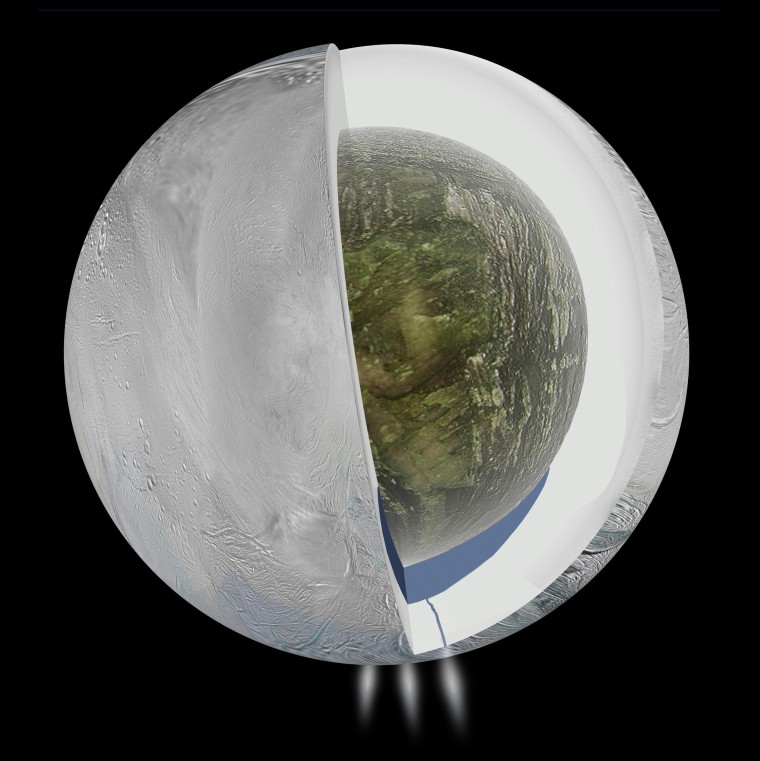
NASA/JPL-Caltech
The small icy and rocky bodies of the Solar System are clearly eager for the spotlight this year. The latest exciting news comes from the Cassini Spacecraft in orbit around Saturn. Previously Cassini had detected water geysers on the south pole of Saturn's moon, Enceladus. Now new data indicated that the moon could have a subsurface ocean about 10 km deep and as big as Lake Superior. The evidence comes from measurements of the gravitation field of the moon, i.e., how the moon affects the path of the Cassini spacecraft as it flies by. Small changes in the detected pull of gravity from Enceladus are caused by variations in its internal structure (how the density of the moon varies from its surface to its core). For comparison, Earth has a solid iron core, a liquid iron core, a somewhat liquid-like mantle of melted rock, and a solid crust. Enceladus, we now think, has a rocky silicate core, an icy mantle and crust, and a liquid salt water ocean at least under its south pole. Planetary scientists are over the moon (pun intended) about this news as it expands our horizon of places to look for signs of life within our own Solar System and in other extrasolar systems. We used to think the only place to look was in the habitable zone of the Sun, or the host star, but Europa and Enceladus have now forced us to think differently.
And now for more geek to help you think differently, or at least think:
- This star survived a supernova going off in its face! (if stars have faces that is…)
- Phil Plait's skeptical but in-depth look at that viral video about the skydiver and the meteorite.
- Vote for your favorite design for NASA's next generation space suit.
- Engineers at Israel's Bar Ilan University are developing a contact lens that could give blind people "sight" through pressure on their cornea.
- In other "seeing" news, Australian scientists are visualizing soundscapes to help track the health of ecosystems.
- If this high resolution map of the Moon were full size, it would be a quarter the size of the U.S.!
- This grad student let bees sting him in indelicate places to determine the worst places to get stung by a bee FOR SCIENCE.
- Mathematicians weigh in on Candy Crush: it's hard. Now you can feel proud of all your wasted time!
- Crows prove to be as smart as most 7 year olds in their intuitive grasp of physics.
- To celebrate the arrival of spring (finally!), watch this GORGEOUS video of ice crystals melting to help melt away all that winter tension.
Have a great week!@Summer_Ash